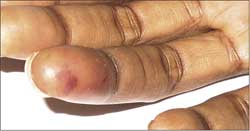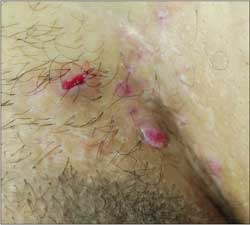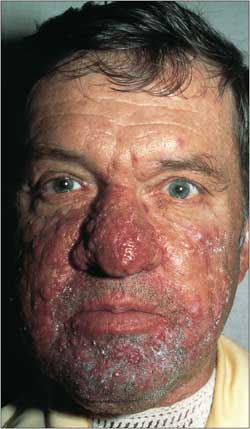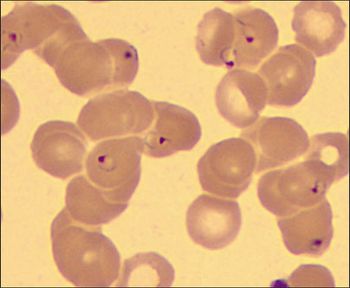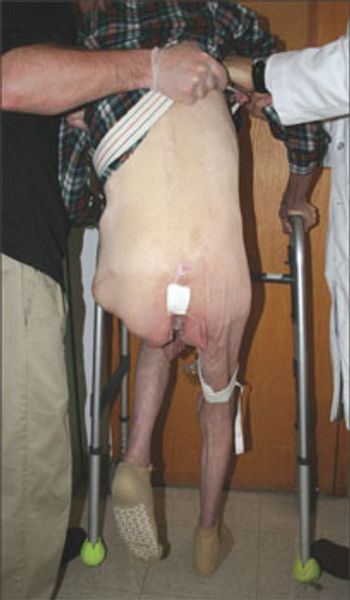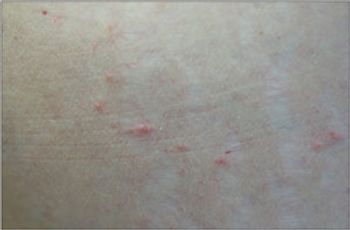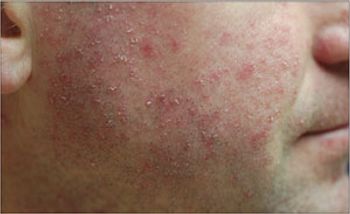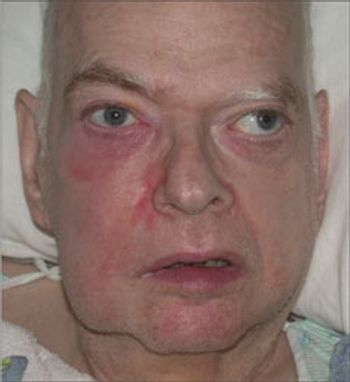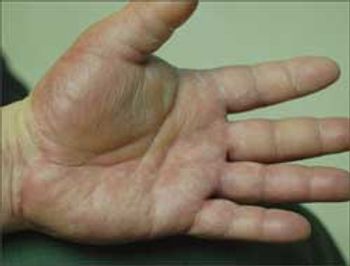
A 49-year-old man has had intermittent eruptions of itchy blisters on both of his palms for the past 15 years. The lesions heal after 2 to 3 weeks and then occur again after 6 months. He suspects that they are caused by poison ivy, but he is unsure of where he would have been exposed to the plant.


